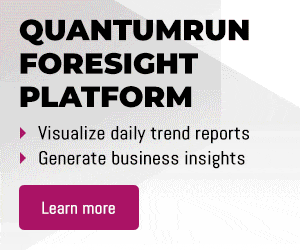Refugees as a geopolitical weapon: Politicizing human suffering
Refugees as a geopolitical weapon: Politicizing human suffering
Refugees as a geopolitical weapon: Politicizing human suffering
- Author:
- April 9, 2025
Insight summary
Refugees are increasingly used as geopolitical tools, with governments and non-state actors manipulating migration flows to destabilize rival nations and create social and political tensions. This strategy strains local resources and public services, challenges social cohesion, and often leads to heightened xenophobia and labor market disruptions. As governments, businesses, and communities grapple with these pressures, they are forced to adapt policies, services, and strategies to manage shifting demographics and complex international dynamics.
Refugees as a geopolitical weapon context
Using refugees as geopolitical tools involves deliberately manipulating refugee flows to create political instability, apply diplomatic pressure, or sow tensions within rival nations. For example, in 2015, Russia facilitated the movement of about 5,500 asylum-seekers from Syria, Afghanistan, and Iraq to Norway’s Arctic border, exploiting a loophole in Norwegian law that prohibited migrants from crossing on foot. Norwegian authorities suspected this maneuver aimed to strain Norway’s welfare system and fuel domestic tensions, particularly benefiting anti-immigrant political factions like the far-right Progress Party. Such actions not only test the resilience of a nation’s social fabric but also complicate its relations with larger entities like the European Union.
In Latin America, governments and criminal networks have similarly weaponized migration to destabilize neighboring countries or antagonize geopolitical rivals. Nicaragua, under President Daniel Ortega, has facilitated the transit of nearly 200,000 migrants from countries like Cuba, Haiti, and India, charging entry fees and encouraging their onward journey toward the US border. This influx has amplified divisions within the US over immigration policy, further complicating domestic political debates. According to US Customs and Border Protection, more than 370,000 people were intercepted at the US-Mexican border in December 2023 alone, highlighting the scale of the issue. By leveraging migration flows, regimes like Ortega’s aim to exert pressure on the US, potentially seeking concessions on sanctions or simply deepening the polarization around immigration discourse.
Refugee camps themselves have become arenas for geopolitical maneuvering. As highlighted by research published in World Development in 2023, countries hosting refugees often implement strategic policies that serve both domestic and foreign interests. For instance, Kenya’s decision to establish large border camps for Sudanese refugees inadvertently facilitated recruitment efforts for the Sudanese People’s Liberation Army, while Tanzania’s camps near the Burundian border strengthened local rebel groups. While humanitarian in nature, refugee policies can also serve as tools of foreign policy, influencing neighboring conflicts.
Disruptive impact
Increased migration flows into specific regions can place pressure on local resources, leading to competition for jobs, housing, and social services. For individuals in host countries, public services like healthcare and education may become strained, leading to longer wait times and reduced quality of service. Individuals may also experience shifts in cultural dynamics, which could challenge community identities and social cohesion. The psychological toll on refugees themselves is significant, as they often face hostility, unstable living conditions, and limited access to employment and education, impacting their ability to integrate successfully.
Sudden surges in refugee populations disrupt local labor markets, leading to increased competition and access to new labor pools. While some industries, such as agriculture and manufacturing, may benefit from a larger, often lower-cost workforce, others may struggle with integration challenges, language barriers, and the need for additional training. Consumer markets can also shift as the demographic makeup changes, requiring companies to adapt their products and services to cater to diverse needs. However, political tensions and public sentiment around migration can influence brand reputation, pushing companies to reconsider their marketing strategies or face backlash from polarized consumer bases.
Increased refugee flows can also strain public infrastructure and require governments to reallocate funding toward social services, border security, and housing initiatives. Policymakers may need to strengthen international alliances to address the causes of forced migration, such as conflict or economic collapse, while also navigating domestic pressures from anti-immigrant groups. Geopolitically, countries targeted by these strategies may adopt stricter immigration policies, leading to heightened tensions with neighboring states and international bodies. Long-term, governments may need to invest in programs that support refugee integration to prevent social fragmentation and potential unrest.
Implications of refugees as a geopolitical weapon
Wider implications of refugees as a geopolitical weapon may include:
- Communities adopting multicultural programs in schools to promote social cohesion and reduce tensions between local residents and refugees.
- Cities expanding affordable housing projects to accommodate growing populations, leading to new job opportunities in construction and urban planning.
- Governments creating stricter border control policies, increasing funding for security technology and surveillance systems.
- Healthcare systems introducing specialized services for refugee populations, boosting demand for multilingual healthcare professionals.
- Local businesses adjusting product offerings to cater to diverse consumer preferences, leading to expanded markets and new revenue streams.
- Employers implementing skills training programs for refugees, filling labor shortages in labor-intensive industries.
- Political parties shifting platforms to focus more on national identity and immigration issues, influencing future election outcomes.
- Environmental agencies addressing the strain on natural resources caused by rapid population growth, leading to new sustainability initiatives.
- Technology companies developing language translation tools to help refugees integrate into workplaces and communities more efficiently.
- Demographic shifts prompting governments to reevaluate long-term social welfare programs, ensuring sustainable support for both aging populations and new arrivals.
Questions to consider
- How could shifting migration patterns reshape the cultural and economic dynamics of your community?
- How might businesses and workplaces adapt to support the integration of refugees into the labor market?
Insight references
The following popular and institutional links were referenced for this insight:



